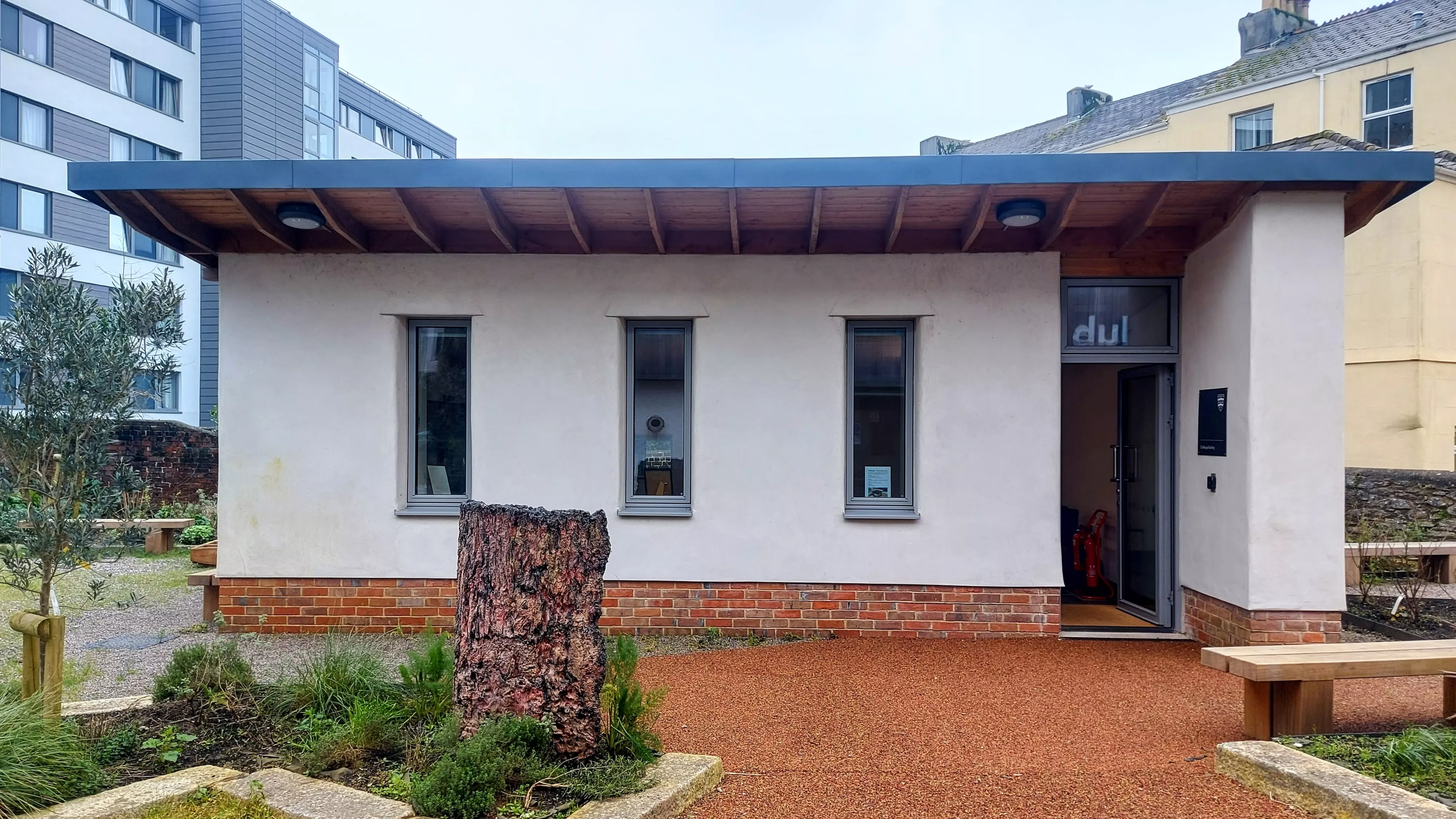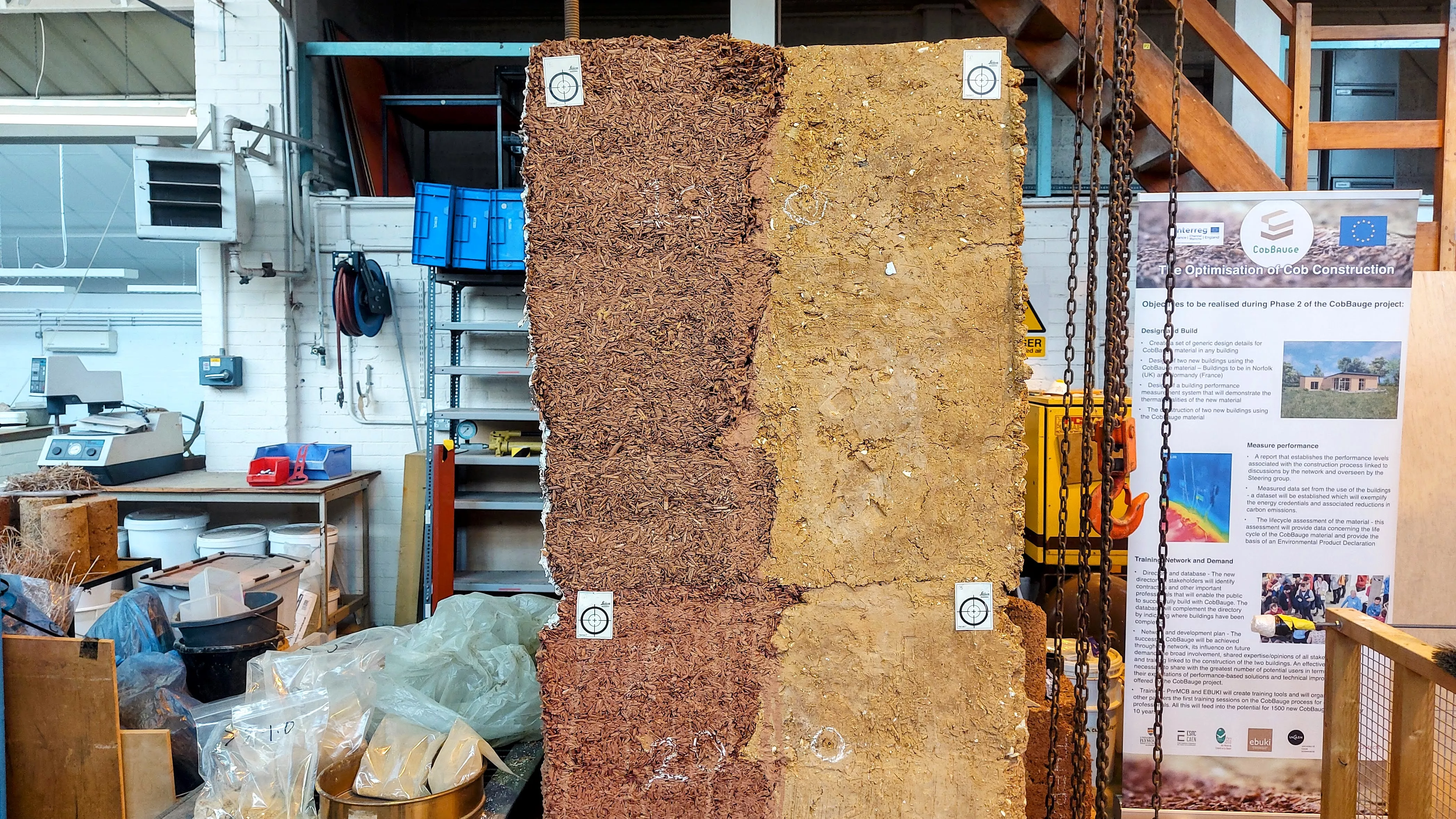
Cob construction back in fashion
The traditional material of cob has been modified to meet modern regulations in the form of a new material called CobBauge.
Cob houses built using traditional techniques, mixing earth and natural fibres with water, have existed in the south of England and northern France for centuries, with thousands still in use. The materials have strong environmental benefits, including inherent thermal benefits and low in-built carbon, but have since fallen foul of modern thermal and structural building regulations.
But the award winning cross-border “CobBauge” research project led by the University of Plymouth has developed a material used to construct a pilot building that meets current building regulations. Under the CobBauge project (a merging of the English and French words for the technique), academics in Plymouth worked alongside French and UK partners to test various combinations of soils and fibres from both countries to create a material that was then thermally and structurally tested over a period of six years.
The project was funded by Interreg VA (France Channel England) and co funded by the ERDF which involved six partners in total: The University of Plymouth, Ecole Superieure D'ingenieur des Travaux de la Construction de Caen (ESITC) (Now Builders for Society), Syndicat Mixte du Parc naturel régional des Marais du Cotentin et du Bessin (PnrMCB), Université Caen-Normandie (UCn), Earth Building UK and Ireland (EBUKI) and Hudson Architects, Norfolk.
During a tour of the project for CIOB members, Principal Investigator on the CobBauge project, Professor Steve Goodhew FCIOB, explained that the project had implications for reducing carbon emissions within the built environment.
“The main selling point is the fact that the material is low carbon in its very existence,” Steve says. “And this is to do with the ingredients and the process. We’re trying to reduce global warming gases down to their very lowest level.”
The benefits of CobBauge include the use of locally sourced materials that require little or no transport, low cost and ease of use. The material also has low embodied energy and a high thermal mass, which Steve states is crucial for regulating the internal temperature in both summer and winter.
The tests found that a combination of clay-rich material and hemp shiv (the woody core of the hemp plant) provided the best thermal insulation but didn’t provide the required structural integrity, so a second structural mix was added on the inside of the walls. “The only solution is a structural layer and a thermal layer, in other words a composite of the two together,” Steve explains.
Read more
School of Art, Design and Architecture senior technician, Kevin Owen, provided more information on the composition of the CobBauge material during a tour of the Laboratory, which also houses two test walls.
The tour also included presentations from CIOB Head of Environmental Sustainability, Amanda Williams, who provided an overview of sustainability within construction, including highlighting the need for the construction sector to make greater strides towards net zero emissions, and CIOB Head of Technical and Standards Development, Dr Gina AL-TALAL FCIOB, who talked about the range of resources available on CIOB Academy.
A video of the full tour is now available on the CIOB Academy website. Members gain 1 CIOB CPD point when they reflect on the ethical aspects of their learning from this activity.

Contact our Press Office
We welcome requests for information, comments and interviews from journalists across the globe so please feel free to contact us: